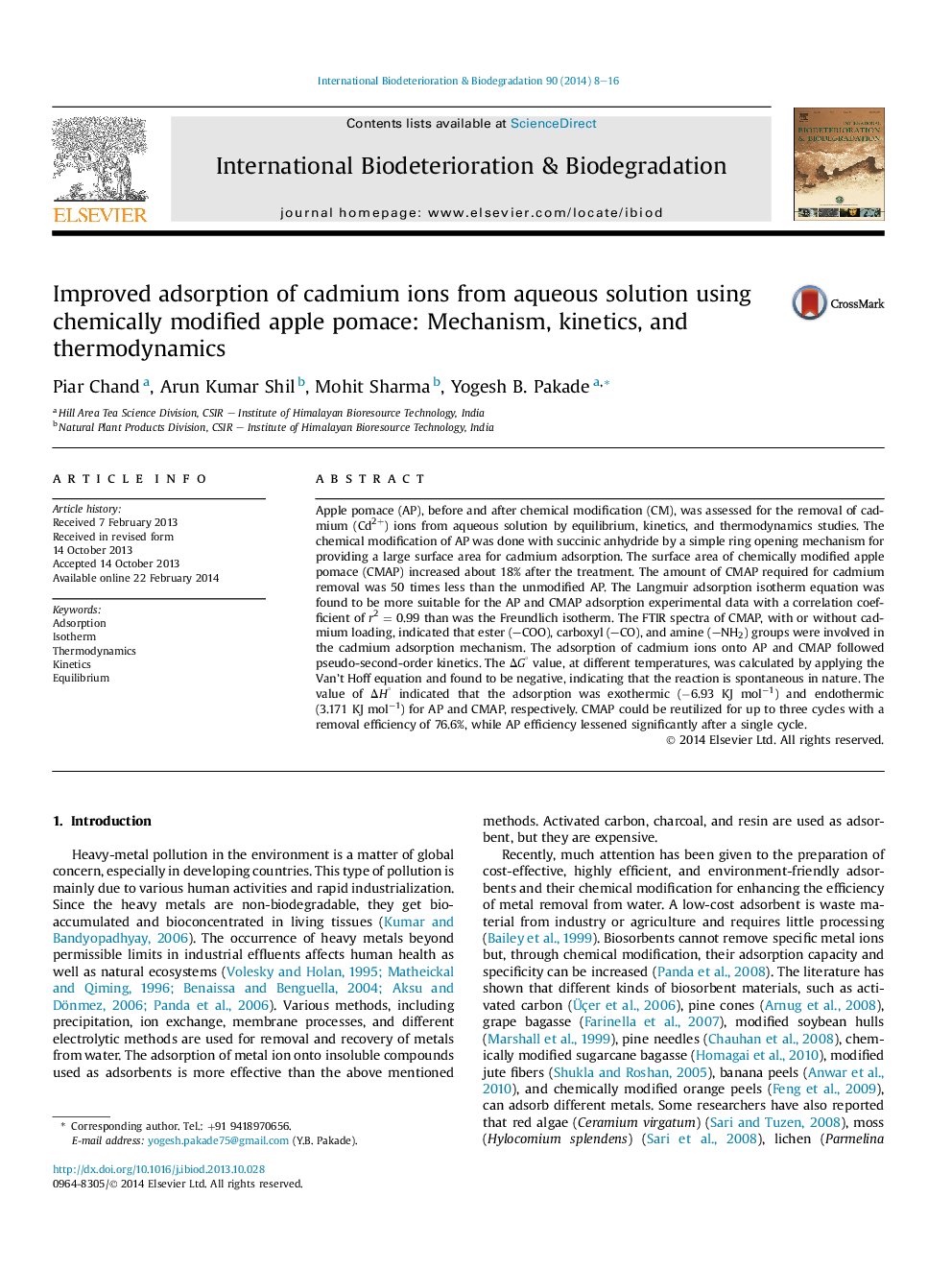| Article ID | Journal | Published Year | Pages | File Type |
|---|---|---|---|---|
| 4364779 | International Biodeterioration & Biodegradation | 2014 | 9 Pages |
•AP from apple juice industry was explored as adsorbent.•The cadmium adsorption capacity of AP was enhanced after chemical modification.•Adsorption was due to electrostatic attraction and coordination bonding.•Advantage of recycling makes CMAP an attractive treatment option.
Apple pomace (AP), before and after chemical modification (CM), was assessed for the removal of cadmium (Cd2+) ions from aqueous solution by equilibrium, kinetics, and thermodynamics studies. The chemical modification of AP was done with succinic anhydride by a simple ring opening mechanism for providing a large surface area for cadmium adsorption. The surface area of chemically modified apple pomace (CMAP) increased about 18% after the treatment. The amount of CMAP required for cadmium removal was 50 times less than the unmodified AP. The Langmuir adsorption isotherm equation was found to be more suitable for the AP and CMAP adsorption experimental data with a correlation coefficient of r2 = 0.99 than was the Freundlich isotherm. The FTIR spectra of CMAP, with or without cadmium loading, indicated that ester (–COO), carboxyl (–CO), and amine (–NH2) groups were involved in the cadmium adsorption mechanism. The adsorption of cadmium ions onto AP and CMAP followed pseudo-second-order kinetics. The ΔG° value, at different temperatures, was calculated by applying the Van't Hoff equation and found to be negative, indicating that the reaction is spontaneous in nature. The value of ΔH° indicated that the adsorption was exothermic (−6.93 KJ mol−1) and endothermic (3.171 KJ mol−1) for AP and CMAP, respectively. CMAP could be reutilized for up to three cycles with a removal efficiency of 76.6%, while AP efficiency lessened significantly after a single cycle.
